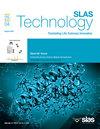染色体研究实例分割的可扩展深度注意机制。
IF 3.7
4区 医学
Q3 BIOCHEMICAL RESEARCH METHODS
引用次数: 0
摘要
由于染色体形状固有的复杂性、可变性和高质量注释数据集的稀缺性,染色体中期图像分割在细胞遗传学和基因组学中是一项关键但具有挑战性的任务。本研究提出了一种鲁棒的实例分割框架,该框架将自动注释管道与增强的深度学习架构集成在一起,以应对这些挑战。介绍了一个新的数据集,包括中期图像和相应的核图,并以COCO格式标注了24个染色体类别的精确实例分割信息。为了克服人工标注过程的劳动强度,采用基于特征的图像配准技术,利用SIFT和同源性,实现了染色体从核图到中期图像的精确映射,显著提高了标注质量和分割性能。该框架包括一个自定义Mask R-CNN模型,增强了基于注意力的特征金字塔网络(AttFPN)、空间注意力机制和LastLevelMaxPool块,用于卓越的多尺度特征提取,并将注意力集中在图像的关键区域。实验评估证明了该模型的有效性,在IoU = 0.50:0.95时平均精度(mAP)为0.579,mAP和AP50分别比基线Mask R-CNN和Mask R-CNN与AttFPN分别提高了3.94%和5.97%。值得注意的是,所提出的架构在分割小型和中型染色体方面表现出色,解决了现有方法的关键限制。本研究不仅引入了最先进的分割框架,而且提供了一个基准数据集,为生物医学成像中染色体实例分割设定了新的标准。自动化数据集创建与先进模型设计的集成提供了可扩展和可转移的解决方案,为解决生物医学和细胞遗传学成像其他领域的类似挑战铺平了道路。本文章由计算机程序翻译,如有差异,请以英文原文为准。
A scalable deep attention mechanism of instance segmentation for the investigation of chromosome
Chromosome segmentation in metaphase images is a critical yet challenging task in cytogenetics and genomics due to the inherent complexity, variability in chromosome shapes, and the scarcity of high-quality annotated datasets. This study proposes a robust instance segmentation framework that integrates an automated annotation pipeline with an enhanced deep learning architecture to address these challenges. A novel dataset is introduced, comprising metaphase images and corresponding karyograms, annotated with precise instance segmentation information across 24 chromosome classes in COCO format. To overcome the labor-intensive manual annotation process, a feature-based image registration technique leveraging SIFT and homography is employed, enabling the accurate mapping of chromosomes from karyograms to metaphase images and significantly improving annotation quality and segmentation performance. The proposed framework includes a custom Mask R-CNN model enhanced with an Attention-based Feature Pyramid Network (AttFPN), spatial attention mechanisms, and a LastLevelMaxPool block for superior multi-scale feature extraction and focused attention on critical regions of the image. Experimental evaluations demonstrate the model's efficacy, achieving a mean average precision (mAP) of 0.579 at IoU = 0.50:0.95, surpassing the baseline Mask R-CNN and Mask R-CNN with AttFPN by 3.94% and 5.97% improvements in mAP and AP50, respectively. Notably, the proposed architecture excels in segmenting small and medium-sized chromosomes, addressing key limitations of existing methods. This research not only introduces a state-of-the-art segmentation framework but also provides a benchmark dataset, setting a new standard for chromosome instance segmentation in biomedical imaging. The integration of automated dataset creation with advanced model design offers a scalable and transferable solution, paving the way for tackling similar challenges in other domains of biomedical and cytogenetic imaging.
求助全文
通过发布文献求助,成功后即可免费获取论文全文。
去求助
来源期刊

SLAS Technology
Computer Science-Computer Science Applications
CiteScore
6.30
自引率
7.40%
发文量
47
审稿时长
106 days
期刊介绍:
SLAS Technology emphasizes scientific and technical advances that enable and improve life sciences research and development; drug-delivery; diagnostics; biomedical and molecular imaging; and personalized and precision medicine. This includes high-throughput and other laboratory automation technologies; micro/nanotechnologies; analytical, separation and quantitative techniques; synthetic chemistry and biology; informatics (data analysis, statistics, bio, genomic and chemoinformatics); and more.
 求助内容:
求助内容: 应助结果提醒方式:
应助结果提醒方式:


